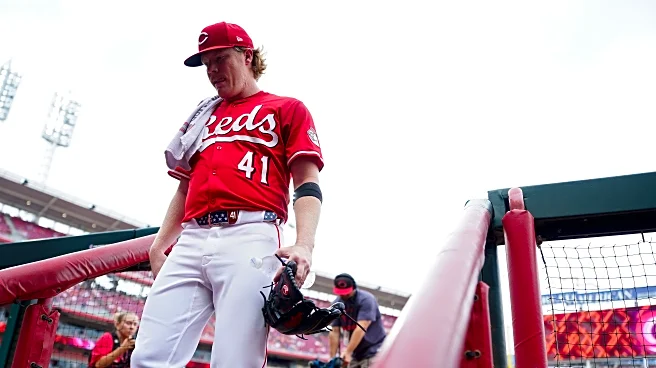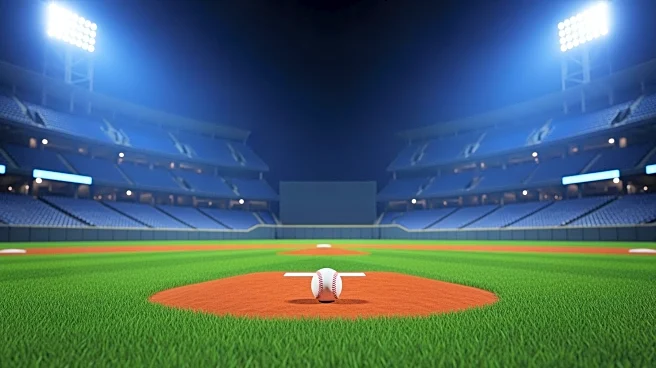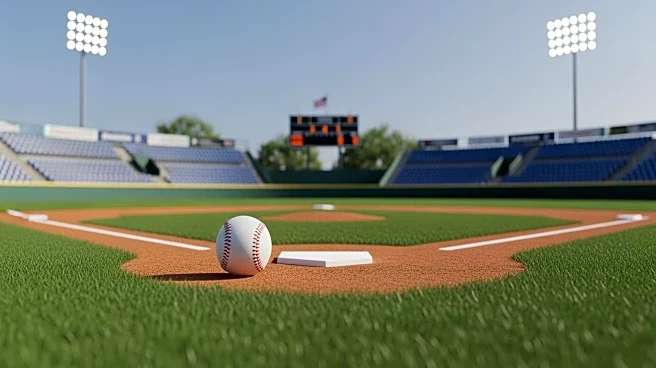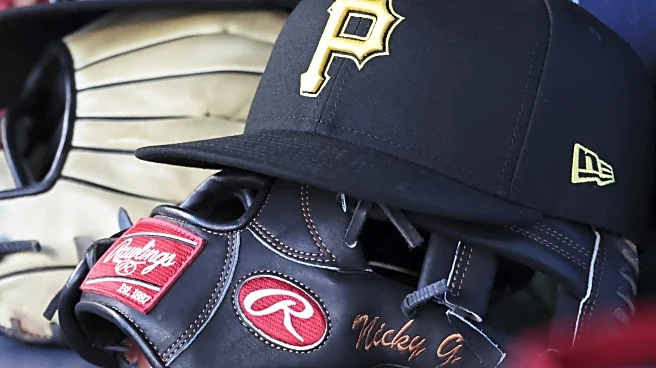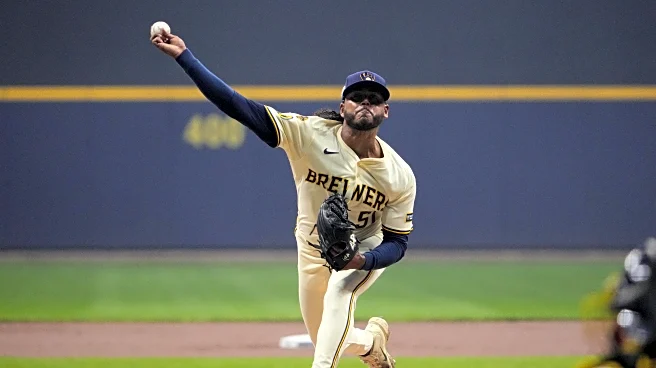Cincinnati Reds lefty Andrew Abbott averaged 92.8 mph with his fastball during his All Star campaign in 2025, a mark that ranked him in just the 26th percentile according to MLB’s Statcast. He also generated
grounders just 32.9% of the time, a mark that ranked in just the 9th percentile.
I point out his weaknesses here because that’s a combo that, on the surface, wouldn’t seem to play well most anywhere, let alone when your home stadium is the tiny Great American Ball Park. Soft-tossing pitches that, more often than not, get hit in the air? Is that really what you’re doing on purpose?!
The results we saw with our own eyes, of course. Abbott fired 166.1 innings of brilliant 2.87 ERA, 1.15 WHIP ball in 2025, his 159 ERA+ work good enough to be valued at 5.6 bWAR by Baseball Reference. It was further escalation from his breakout 2024 season that featured 138.0 IP of 3.72 ERA ball, as Andrew increased his strikeouts (up to 8.1 per 9 IP from 7.4) while dropping his walks (3.4 per 9 IP in 2024 down to just 2.3 in 2025).
Abbott’s 5.6 bWAR ranked him 6th in all of Major League Baseball and 3rd in the National League – behind only Philadelphia’s Cristopher Sanchez and Pittsburgh’s Paul Skenes. That’s it. That’s the entirety of who was better overall in the NL during the course of the 2025 season.
The 2025 season is done and in the books, though, and it’s time to start looking more at how Abbott got to those results than the results themselves as that’s likely a better way to look forward to what he’ll be able to pull off in 2026 and beyond. And in Abbott’s case, that’s where things begin to get a bit murky.

While Baseball Reference has loved Abbott’s work since the start of 2024 (8.9 total bWAR), FanGraphs has been much more tepid in their adoration (4.9 fWAR, including 3.9 in 2025). That’s still a solid valuation, obviously, but that’s a difference of roughly 2 wins per season – a huge amount given the thin margin in which the Cincinnati Reds snuck into the postseason in 2025. There are a couple pretty big and obvious reasons for the difference, too.
Abbott’s peripherals simply aren’t that great. Fielder Independent Pitching (FIP), a metric that measures a pitcher solely on the events they can control (and not those where the defenders behind them can make or break them) ranked him as just tied for 34th among the 127 pitchers who threw at least 100 IP in 2025. Among the 114 pitchers who threw at least 200 total IP dating back to the start of 2024, his 4.29 mark ranks 76th. In other words, based purely on the outcomes only he influences – strikeouts, walks, batters hit, and homers – he’s been mostly mediocre among durable starters, and then you get to factor in that the defense the Reds have put behind him for most of that time has been largely sub-par, too.
So, how exactly has Abbott managed to get to this point? What about any of it really looks real, let alone sustainable?
It feels a little too on-the-nose, admittedly, given the mustache, the left-arm, and the lack of elite velocity, but there’s a genuine craftiness to this particular lefty. As in, he’s figured out how to master his craft, and that’s the art of making hitters think they’re swinging at something good when it’s really something much worse.
In 2025, for instance, the 87.8 mph average exit velocity off his pitches ranked him in the 84th percentile, the 33.7% hard-hit rate on his offerings ranking up in the 93rd percentile. His 30.2% chase rate ranked in the 74th percentile, and that ties a bow a bit on who Andrew Abbott has become – a pitcher who isn’t really trying to strike you out, per se, but knows you’ll either miss his pitches or simply make weak contact on bad swings when trying to swat them.
That’s why looking purely at his BABIP allowed may be a bit misleading. League-average Batting Average on Balls in Play sat at .291 in 2025, and it’s hovered between .290 and .297 dating back to the 2020 season. Abbott, though, limited his opposition to just a .276 mark in 2025 after an even lower .260 mark in 2024, numbers that initially would suggest that there’s some inevitable regression coming for him. However, BABIP on fly balls is significantly lower than on liners and grounders – particularly when a big portion of those fly balls are softly hit – and that’s where Abbott has seemingly found a hot zone for his work. A pitcher like him – who coaxes softly hit fly balls more often than almost anyone – should have a BABIP that sits comfortably lower than league average.
He’s hardly the first pitcher who has molded themselves into this kind of anti-prototype. After all, in many ways it’s easier for a batter to park a 100 mph heater into the seats than a 91 mph one since the velocity itself provides a lot of the energy headed the other way. Wade Miley kept the ball on the ground a lot more than Abbott, but his brilliant 2021 season with the Reds saw him rank in the 95th percentile in average exit velocity, 77th percentile in chase rate, and 83rd percentile in hard-hit percentage. Statcast data doesn’t go back before 2015, but that’s an eerily similar profile that one Johnny Cueto put together in his best days as a Red.
After all, a can of corn is one of 27 outs you have to get just as much as a swinging strike three on a 102 mph heater is. If anything, Abbott’s 84 mph change on the bottom corner of the zone is precisely the kind of pitch that will twist hitters into the dirt when viewed the day after those same hitters watched Hunter Greene throw dozens of speedballs past them (and made them looked like fools, boy).
Pitching, as it has always been, will continue to be cat and mouse with elite professional hitters. Now that there’s another full season of data on Abbott, you’d expect hitters to try their best to restrain themselves from chasing his offerings on the fringes of the strike zone. Abbott, of course, will then get to react by making sure those offerings actually catch the zone as strikes and not miss it an inch outside as balls, but this game of inches could mean his offerings are that much easier to hit harder. It’s honing that craft in a way that continues to keep hitters off-kilter that will be what determines his value going forward, how well he can pattern his pitches, nail his spots, and mix in his heater, cutter, slider, and curve to augment that beautiful change.
FanGraphs ‘hates’ him, and his BABIP allowed is somewhat comically low, but there’s actually not a ton about what we’ve seen from Abbott that screams immediate regression to me given the way in which he approaches hitters. He may never end up being quite as good as he was in 2025, but even a decent bit of come-down from that level leaves the Reds with an insanely good, valuable pitcher in the heart of their rotation – he just does it in a way far, far different than Greene, Skenes, or Chase Burns.
